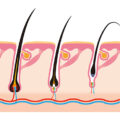Last updated on June 3, 2024
[starbox]
Navigating the Landscape of Hair Loss Treatments
The search for effective hair loss treatments can lead one down a labyrinth of options, each promising varying degrees of success. From topical applications to oral medications, laser therapies to hairpieces, the array of choices can be overwhelming. Yet, among these alternatives, one solution stands resolute—a hair transplant.
Diverse Solutions, Limited Permanence
While various treatments may offer temporary relief or slow down the progression of hair loss, it’s imperative to recognise that most of these options lack the permanence sought by those experiencing hair loss. They often necessitate consistent, ongoing usage and multiple treatments.
Amidst the spectrum of hair loss interventions, a hair transplant rises as a formidable contender, fortified by its unique scientific attributes. What then, are the factors that lend hair transplants their remarkable status of enduring permanence?
The Science of Follicular Relocation
A hair transplant involves the meticulous extraction of healthy hair follicles from donor areas, often located at the back of the head, followed by their strategic implantation into areas experiencing hair loss. These transplanted follicles retain their genetic resistance to factors causing hair loss, ensuring that they continue to thrive in their new location. This process imbues the transplanted hair with an inherent strength, rendering it resistant to future hair loss.
Unveiling the Permanence Mechanism
The scientific brilliance behind the permanence of hair transplants hinges on several factors:
- Genetic Resilience: The follicles relocated during a transplant inherit their genetic resistance to the influences of hair loss. This hereditary strength ensures that the transplanted hair persists in its new location with a steadfast vitality.
- Precise Graft Placement: The meticulous artistry of graft placement mirrors natural hair growth patterns. This precision results in an indistinguishable fusion of transplanted hair with the recipient area, contributing to a seamless and enduring aesthetic.
- Selective Dominance: Transplanted hair is selectively resistant to dihydrotestosterone (DHT), the hormone responsible for hair loss. This physiological resistance significantly contributes to the sustained survival and regrowth of transplanted follicles.
The Time-Tested Choice: Hair Transplants
As you navigate through the spectrum of hair loss treatments, remember that a hair transplant is the only proven permanent solution.
Schedule a consultation with reputable professionals in Perth who understand the nuances of hair restoration. Embrace this journey toward lasting transformation, where science, art, and your unique narrative converge to rewrite the story of your hair, and by extension, your life.








